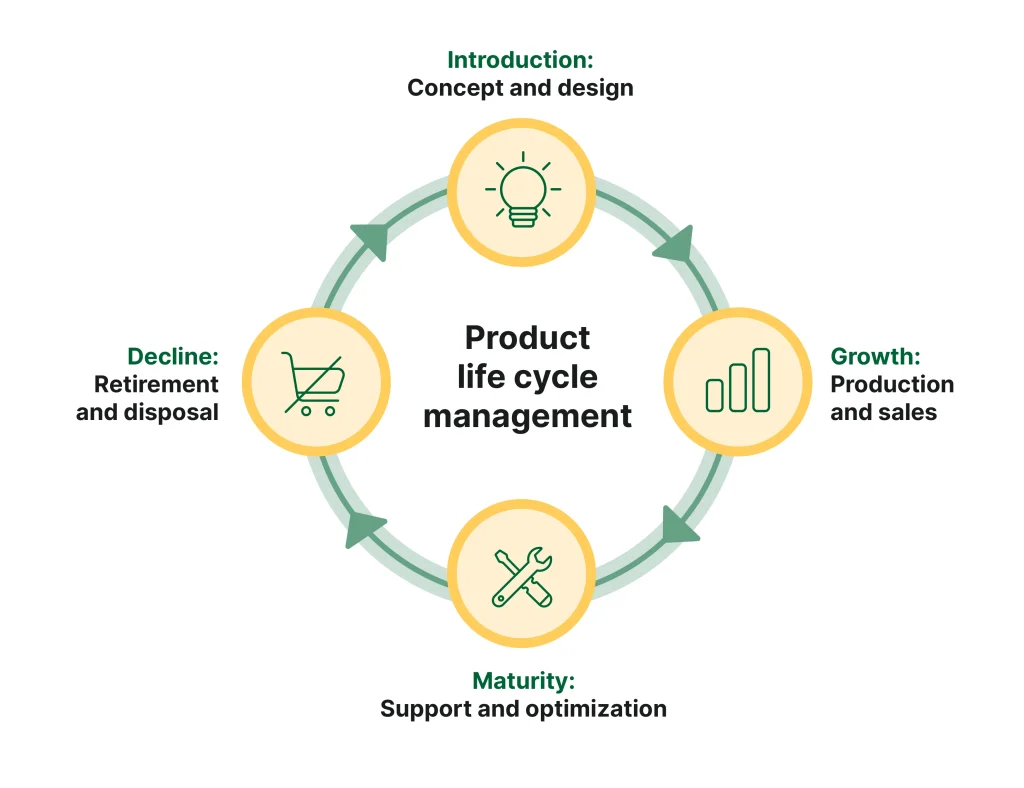
Product Lifecycle Management: Knowing When to Pivot or Discontinue
In the fast-moving world of e-commerce, managing a product’s lifecycle effectively is critical to sustained growth and profitability. Whether you’re launching on Amazon, selling through Shopify, or expanding to platforms like Walmart Marketplace, understanding when to optimize, pivot, or discontinue a product can help you avoid wasted resources and focus on scalable success.
What Is Product Lifecycle Management (PLM)?
Product Lifecycle Management (PLM) refers to the process of overseeing a product’s journey from development and launch to growth, maturity, and eventual decline. In today’s digital commerce landscape, PLM isn’t just about logistics—it’s a strategic framework for making data-driven decisions that affect marketing, pricing, inventory, and profitability.
Understanding the key phases of a product lifecycle can help identify when intervention is needed:
Introduction: Sales are slow as awareness builds.
Growth: Sales rise rapidly; competition may increase.
Maturity: Sales stabilize; market saturation may occur.
Decline: Demand decreases; margins shrink.

Identifying Signs It's Time to Pivot or Discontinue
Not every product is meant to last forever. Here are some telltale signs that it may be time to reassess:
1. Declining Sales with No Seasonal Correlation
If your product shows a consistent downward trend outside of expected seasonality, it may signal declining relevance. Review your sales reports in Amazon Seller Central or through tools like Shopify Analytics to compare historical performance.
2. Diminished ROI Despite Advertising Efforts
When even your best Amazon PPC or social media campaigns fail to move the needle, it’s a red flag. Examine your ACOS (Advertising Cost of Sale) or TACoS (Total Advertising Cost of Sale) metrics. If you’re spending more to acquire a customer than you’re earning, it’s time to reevaluate.
3. Negative Customer Feedback or High Return Rates
A spike in returns or poor reviews often points to a product flaw or mismatch with audience expectations. Tools like Amazon Voice of the Customer can offer valuable insights into buyer sentiment.
4. Stagnant Inventory and Storage Fees
Excess inventory not only ties up capital but can also result in long-term storage fees on Amazon FBA. Using Amazon’s Inventory Performance Index can help you track performance and avoid penalties.
5. Competitor Saturation Without Differentiation
If your niche is suddenly flooded with lower-priced competitors and your product lacks a clear value proposition, it may be smarter to pivot or discontinue than to race to the bottom.

Pivot vs. Discontinue: What’s the Difference?
A pivot means adapting the product or its positioning to better serve your market. This might involve:
Updating packaging or branding
Bundling with complementary products
Targeting a different audience segment
Enhancing features based on customer feedback
A discontinuation is a strategic decision to phase out a product entirely, freeing up resources for more profitable opportunities.
How to Pivot Strategically
Pivoting isn’t just about tweaking; it’s about reevaluating your product-market fit and customer demand. Here’s how:
Analyze Your Data: Review sales history, search term performance, and customer demographics.
Revisit Your USP: What makes your product unique today? If you can’t answer that clearly, it’s time to redefine it.
Test New Variations: Try A/B testing with Amazon’s Manage Your Experiments tool to see what changes resonate.
Optimize Your Listing: Make sure your SEO keywords, images, and A+ content reflect the new positioning.
When and How to Discontinue a Product
If you’ve exhausted all options and the product still underperforms, discontinuation may be the best move. Here’s a clean exit plan:
Create a Sell-Through Strategy: Offer discounts or bundle promotions to move remaining inventory.
Turn Off Advertising: Stop all PPC campaigns to avoid wasting budget.
Notify Customers: If applicable, let loyal buyers know via email or social media that the product will be phased out.
Delist Systematically: Remove listings from your Shopify, Amazon, or Walmart catalog once inventory is depleted.

Final Thoughts
Smart product lifecycle management is one of the most underrated drivers of long-term success in e-commerce. By knowing when to double down, pivot, or walk away, you protect your margins, optimize operations, and focus on your most promising opportunities.
If your brand needs help identifying underperforming SKUs or executing a strategic pivot on Amazon, consider partnering with a seasoned account management team. Knowing when to say goodbye to a product might be the best hello to your next bestseller.














